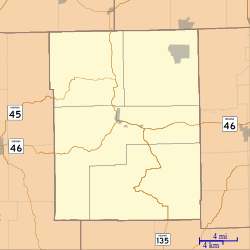항기생충제
Antiparasitic구충제는 구충류, 아메바,[1][2] 외기생충류, 기생균류,[3] 원생동물 [1]등에 의해 발생하는 기생충성 질환의 치료를 목적으로 하는 약물이다.항기생충제는 감염을 파괴하거나 성장을 [4]억제함으로써 감염의 기생충을 목표로 한다; 그것들은 보통 특정 등급 내의 제한된 수의 기생충에 효과적이다.구충제는 박테리아를 표적으로 하는 항생제와 곰팡이를 표적으로 하는 항진균제를 포함하는 항균제 중 하나이다.그것들은 경구, 정맥 또는 [4]국부적으로 투여될 수 있다.
광스펙트럼 항기생제는 세균에 대한 광스펙트럼 항생제와 유사한 항기생제로서 다양한 종류의 기생충에 의해 야기되는 광범위한 기생충 감염을 치료하는데 효과가 있다.
종류들
넓은 스펙트럼
반원충류
- 멜라소프롤(Trypanosoma brucei에 의한 수면병 치료용)
- 에플로니틴(수면병용)
- 메트로니다졸(트리코모나스에 의한 질염용)
- 티니다졸(Giardia lamblia에 의한 장내 감염용)
- 밀테포신(현재 샤가스병 연구 중 내장 및 피부리쉬마니아증 치료용)
항충해제
안티메타도스

안티스테코드
- Niclosamide (조충 감염용)
- Praziquantel (조충 감염용)
- 알벤다졸(광범위)
안티리마토드
항아메빅스
항진균제
의료 용도
구충제는 약 20억 명의 [1]사람들에게 영향을 미치는 기생충성 질병을 치료한다.
행정부.
항경련제는 경구, [4]국소, 정맥주사를 포함한 특정 약물에 따라 다양한 경로를 통해 투여될 수 있다.
특히 수의학에서 구충제에 대한 내성이 점점 더 우려되고 있다.계란 부화 분석은 감염을 일으키는 기생충이 표준 약물 [10]치료에 내성을 갖게 되었는지 여부를 확인하는 데 사용할 수 있습니다.
의약품 개발 이력
초기 구충제는 효과가 없었고, 종종 환자에게 독성이 있었으며,[4] 숙주와 기생충을 구별하는 것이 어려웠기 때문에 투여하기가 어려웠다.
1975년과 1999년 사이에 1,300개의 신약 중 13개만 구충제였고, 이로 인해 저소득 국가를 불균형적으로 타깃으로 하는 질병에 대한 새로운 치료제 개발을 추진하기에는 인센티브가 부족하다는 우려가 제기되었다.이를 통해 Bill and Melinda Gates 재단의 투자를 포함한 새로운 공공 부문과 민관 파트너십(PPP)이 생겨났습니다.2000년과 2005년 사이에 20개의 새로운 구충제가 개발되었거나 개발 [11]중에 있다.금속 함유 화합물은 [12]또 다른 접근 방법의 대상이다.
조사.
지난 수십 년 동안, 트리아졸로피리미딘과 그 금속 복합체는 기존의 시판 항균제의 대체 약물로 검토되어 왔으며, 부작용의 감소와 기생충 약물 [13]내성의 개발을 모색하고 있다.
「 」를 참조해 주세요.
- 페루의 발삼(Balsam)은 기생방지 특성을 가지고 있다.
- 나글레리아 파울레리
- 바라무티아 만드리야리스
레퍼런스
- ^ a b c Kappagoda, Shanthi; Singh, Upinder; Blackburn, Brian G. (2011). "Antiparasitic Therapy". Mayo Clin. Proc. 86 (6): 561–583. doi:10.4065/mcp.2011.0203. PMC 3104918. PMID 21628620.
- ^ Kusrini E, Hashim F, Azmi WN, Amin NM, Estuningtyas A (2016). "A novel antiamoebic agent against Acanthamoeba sp. - A causative agent for eye keratitis infection". Spectrochimica Acta Part A: Molecular Spectroscopy. 153: 714–21. Bibcode:2016AcSpA.153..714K. doi:10.1016/j.saa.2015.09.021. PMID 26474244.
- ^ a b Molina JM, Tourneur M, Sarfati C, et al. (June 2002). "Fumagillin treatment of intestinal microsporidiosis". N. Engl. J. Med. 346 (25): 1963–9. doi:10.1056/NEJMoa012924. PMID 12075057.
- ^ a b c d "ANTIPARASITICS". Purdue University Cytology Laboratories. Purdue Research Foundation. Retrieved 2015-08-30.
- ^ Di Santo N, Ehrisman J (2013). "Research perspective: potential role of nitazoxanide in ovarian cancer treatment. Old drug, new purpose?". Cancers (Basel). 5 (3): 1163–1176. doi:10.3390/cancers5031163. PMC 3795384. PMID 24202339.
Nitazoxanide [NTZ: 2-acetyloxy-N-(5-nitro-2-thiazolyl)benzamide] is a thiazolide antiparasitic agent with excellent activity against a wide variety of protozoa and helminths. ... Nitazoxanide (NTZ) is a main compound of a class of broad-spectrum anti-parasitic compounds named thiazolides. It is composed of a nitrothiazole-ring and a salicylic acid moiety which are linked together by an amide bond ... NTZ is generally well tolerated, and no significant adverse events have been noted in human trials [13]. ... In vitro, NTZ and tizoxanide function against a wide range of organisms, including the protozoal species Blastocystis hominis, C. parvum, Entamoeba histolytica, G. lamblia and Trichomonas vaginalis [13]
- ^ White CA (2004). "Nitazoxanide: a new broad spectrum antiparasitic agent". Expert Rev Anti Infect Ther. 2 (1): 43–9. doi:10.1586/14787210.2.1.43. PMID 15482170. S2CID 219184877.
- ^ Hemphill A, Mueller J, Esposito M (2006). "Nitazoxanide, a broad-spectrum thiazolide anti-infective agent for the treatment of gastrointestinal infections". Expert Opin Pharmacother. 7 (7): 953–64. doi:10.1517/14656566.7.7.953. PMID 16634717. S2CID 13436814.
- ^ Anderson, V. R.; Curran, M. P. (2007). "Nitazoxanide: A review of its use in the treatment of gastrointestinal infections". Drugs. 67 (13): 1947–1967. doi:10.2165/00003495-200767130-00015. PMID 17722965.
- ^ Lanternier F, Boutboul D, Menotti J, et al. (February 2009). "Microsporidiosis in solid organ transplant recipients: two Enterocytozoon bieneusi cases and review". Transpl Infect Dis. 11 (1): 83–8. doi:10.1111/j.1399-3062.2008.00347.x. PMID 18803616. S2CID 205423324.
- ^ Sargison, Neil (2009-01-26). Sheep Flock Health: A Planned Approach. John Wiley & Sons. ISBN 9781444302608.
- ^ Pink, Richard; Hudson, Alan; Mouries, Marie-Annick; Bendig, Mary (September 2005). "Opportunities and Challenges in Antiparasitic Drug Discovery". Nature. 4 (9): 727–740. doi:10.1038/nrd1824. PMID 16138106. S2CID 19379800.
- ^ Gambino, Dinorah; Otero, Lucia (2019). "Chapter 13. Metal Compounds in the Development of Antiparasitic Agents: Rational Design from Basic Chemistry to the Clinic". In Sigel, Astrid; Freisinger, Eva; Sigel, Roland K. O.; Carver, Peggy L. (Guest editor) (eds.). Essential Metals in Medicine:Therapeutic Use and Toxicity of Metal Ions in the Clinic. Metal Ions in Life Sciences. Vol. 19. Berlin: de Gruyter GmbH. pp. 331–357. doi:10.1515/9783110527872-019. ISBN 978-3-11-052691-2. PMID 30855114. S2CID 73728129.
{{cite book}}:editor4-first=범용명(도움말)이 있습니다. - ^ Review (2017). "Leishmanicidal and Trypanocidal Activity of Metal Complexes with 1,2,4-Triazolo[1,5-a]pyrimidines: Insights on their Therapeutic Potential against Leishmaniasis and Chagas Disease". Curr. Med. Chem. 24 (25): 2796–2806. doi:10.2174/0929867324666170516122024. PMID 28521698.


